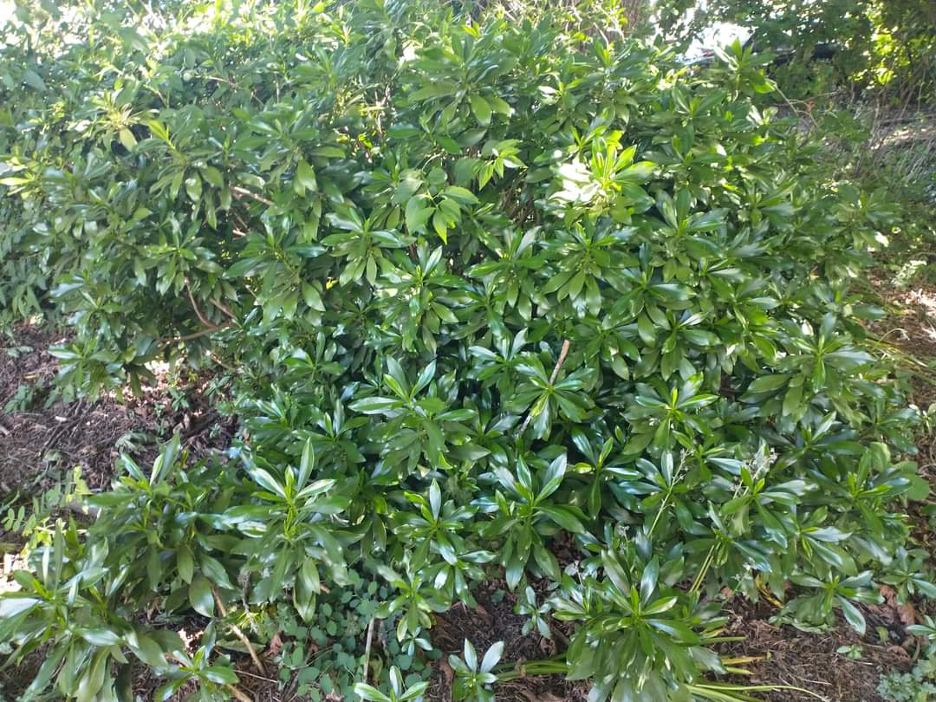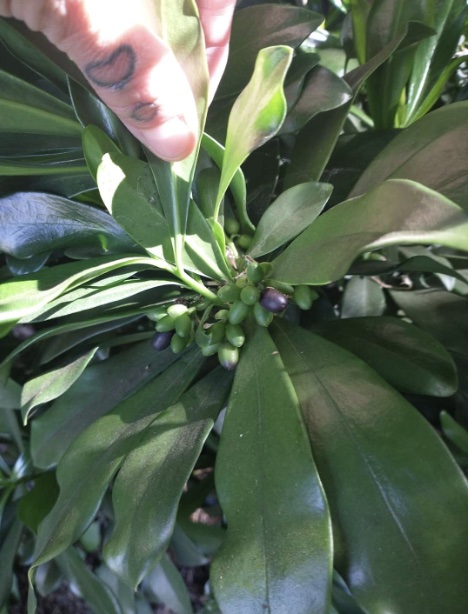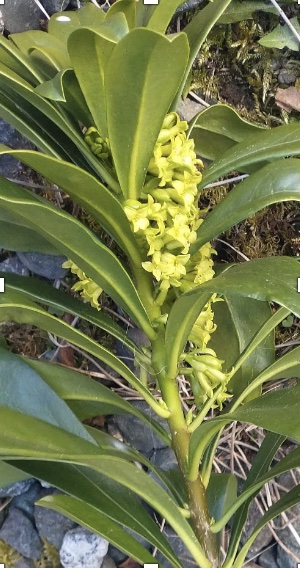Scientific Name: Daphne laureola, commonly known as Daphne or spurge laurel.
By Laura Black

How to Identify
Daphne grows to 1.5 m in height in either a single stem or a multi-branching shrub. As it gets taller, only the topmost section of the plant has leaves. Its rhododendron-like leaves are dark green, glossy, oval-shaped and grown in a spiral pattern around the top of the stem.

In the spring, axial clusters of tiny, fragrant, light yellow-green flowers form between the leaves. The young fruit are green turning to black and even though poisonous to pets & humans – wild birds like them.

Which parts of the plant are poisonous?
The toxins are concentrated in the sap, bark and berries. Spurge Laurel is listed as a poisonous plant with the Canadian Poisonous Plants Information System and as a toxic plant by Worksafe BC. Its toxic sap can cause skin rashes, nausea, swelling of the tongue, and in rare instances coma.
How to Remove
Daphne is designated as a ‘Management Species’ on the BC Provincial Priority Invasive Species List. Always wear your Personal Protective Equipment (PPE) - gloves and preferably goggles and a breathing mask. Small plants can be pulled out by hand, but larger plants should be carefully cut just below the soil line (removing some roots) with large loppers. Many non-profit organizations and CRD-based volunteer groups tackle the removal of invasive plant species.
- Reach out and get trained on how to remove invasive species with like-minded enthusiastic volunteers with organizations such as:
Habitat Acquisition Trust
Greater Victoria Green Team - An Environmental Charity
Volunteering for Regional Parks
How to Dispose of Plants
- Place in bags or covered loads marked as ‘Invasive Species’ and take to the Hartland Landfill
What to Grow Instead of Daphne laureola:
- Evergreen huckleberry (Vaccinium ovatum).
- Japanese azalea (Rhododendron kiusianum hybrids).
- Oregon grape (Berberis Nervosa).
- Tall oregon grape (Berberis aquifolium).
- Winter daphne (Daphne Odora).
Sources:
Invasive Species Council of BC: Youtube video, "How to ID & Manage Daphne laurel". How to: ID and Manage Daphne laurel
The Invasive Species Council of BC: Fact Sheet - About This Species. https://bcinvasives.ca/invasives/daphne-spurge-laurel/
The Invasive Species Council of BC: Fact sheet - Grow Me Instead. https://bcinvasives.ca/play-your-part/plantwise/grow-me-instead/
WorkSafeBC: Fact Sheet - Toxic Plant Warning (Publication Date: 2006)
https://www.worksafebc.com/en/resources/health-safety/information-sheets/toxic-plant-warning/severe-skin-irritation-from-spurge-laurel-daphne-laureola?lang=en
Capital Regional District: Fact Sheet - Invasive Species. Information on disposal. https://www.crd.bc.ca/education/concerns/invasive-species